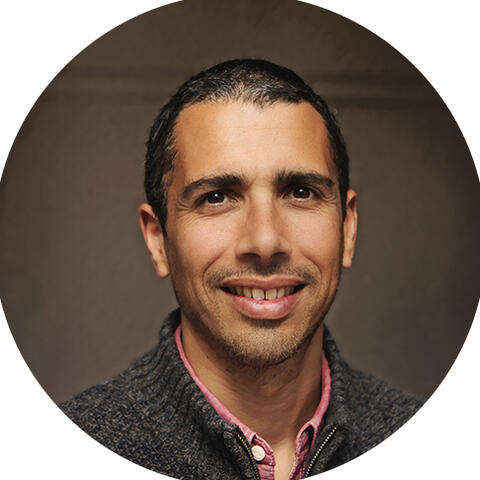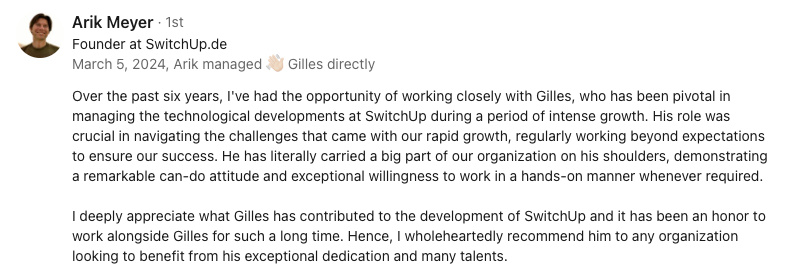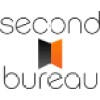Abstract:
The article emphasizes that how you say goodbye when leaving a tech job is crucial for safeguarding your professional reputation, maintaining relationships, and ensuring future opportunities in the closely-knit tech industry. It offers practical advice and minimalist scripts for handling difficult exit scenarios—such as resigning to your manager, declining counter-offers, announcing your departure to the team, and requesting references—while highlighting common pitfalls like oversharing, negativity, and inconsistency. Unique details include sample messages for both formal and casual company cultures, tips for multicultural teams, and a checklist to avoid last-minute mistakes and legal trouble. The central message is that clear, brief, and respectful communication—tailored to the company’s culture and your situation—helps you leave on good terms, minimizes drama, and preserves your professional narrative, making a lasting positive impression beyond just clearing your desk.
Leaving a tech job is never just about cleaning out your desk or sending a last email. The way you say goodbye can shape your career for years, often in ways you don’t see until much later. Tech is a small world, and your last impression might matter even more than your first. This is not a story about perfect exits, but about what happens when things go wrong, what I wish I’d done differently, and how you can avoid the mistakes I made.
This guide is based on real experiences: Walking away from a CTO role in Berlin after months of silence, and shutting down my own company in Beijing despite my best intentions. I will share the lessons and tools that might have made those moments better. If you are preparing to leave a tech job, or think you might one day, these are the steps I wish I had followed, the pitfalls I learned to avoid, and the scripts and principles that can help you leave on better terms—no matter what comes next.
Why tech goodbyes are different
I believe that, even more than in other sectors, tech is built on networks and relationships. People move between companies, projects, and even countries, but reputations travel faster than you might expect. One awkward exit can follow you for years, affecting your chances of finding allies, mentors, or honest references. In industries like retail, hospitality, or warehouse work, it is often possible to quietly leave your job and be replaced without much notice. In tech, however, departures are rarely invisible. News gets around quickly and your professional bonds matter, making the way you leave just as important as how you arrive.
Goodbyes in tech also tend to be public. Whether you make an announcement on Slack, post an update on LinkedIn, or simply say goodbye in a team meeting, your departure often becomes a talking point. People will remember if you left with respect and clarity, or if you left others scrambling and confused. More than once, I’ve seen a poor exit haunt someone’s job search or even follow them to a new continent. That’s why it’s worth learning from both successes and failures.
2 true stories or "What not to do"
In theory, I always knew that communication mattered. In practice, I learned its real cost the hard way. These are not examples to copy, but stories to learn from.
Berlin: The silent exit
I spent years as CTO at a Berlin startup, where I hoped to drive technical change. After hitting a wall with the CEO -- months of stalled decisions and no progress -- I finally decided to resign. Wanting to do things right, I gave a staggering 14 months notice, hoping this would give the company time to plan a smooth transition and the team a sense of stability.
Instead, my repeated attempts to start a offboarding-checklist-transition plan were met with silence. I sent group messages, direct reminders, and offered handover notes. The CEO ignored every message until the very end. The team saw my effort, but the lack of response from the top left everyone stressed and unprepared. My long notice period became a running joke. When I finally left, the CEO never spoke to me again. I realized too late that documentation and early warnings cannot fix a broken communication channel. Engagement has to go both ways.
Beijing: The shock of honesty
Years earlier, I co-founded a company in Beijing, building a close-knit team of about 20 people. We had some success, but after 3 years, it was clear we could not sustain the business. My partner and I agonized over the decision for 2 weeks, then announced to the team that the company would close. I expected disappointment, but what I got was something deeper: The team felt betrayed and blindsided. For them, this was not just a job, but a shared adventure and source of identity. Our direct, "transparent" approach fell flat because we did not give people time to process or a chance to participate in the story. I learned that honest communication is not enough if it is not repeated, empathetic, and tailored for those who will be most affected.
Both exits taught me the same lesson: One-sided communication fails, and the real work is in helping people navigate change, not just delivering the news.
Common pitfalls and how to avoid them
Here are mistakes I have seen (and made) more than once, with ways to do better:
- Not preparing your message: If you do not clarify for yourself why you are leaving, others will invent reasons for you. Write down your main points before you speak.
- Oversharing or complaining: It is tempting to "set the record straight" or air grievances on your way out. Resist. Focus on the future and what you learned, not what went wrong.
- Being inconsistent: If you tell your boss one story and your team another, rumors will spread. Decide on your message and stick to it, even if people press for details.
- Failing to plan for emotions: Whether it is sadness, anger, or surprise, exits trigger feelings in others. Anticipate tough reactions and be patient, not defensive.
- Leaving the handover to chance: Even if you do not get support from above, create documentation, suggest successors, and tie up as many loose ends as possible.
The antidote to these pitfalls is not more words, but better preparation. Decide in advance how you will communicate, what you will share, and how you will respond if people are upset. The rest of this guide is designed to help you do just that.
Your exit playbook: The only scripts and tools you need!
Below are the scripts, checklists, and mindset shifts I wish I’d had—each adapted for the most common scenarios. Remember: These are not one-time messages, but starting points for real conversations, adapted to your situation.
How to resign to your manager?
Your manager may have questions, or react emotionally. Keep your first message short, grateful, and clear about your last day:
"Thank you for the support and opportunities I have had here. I have decided to accept another opportunity, and my last working day will be ... I want to ensure the transition is as smooth as possible and will do my best to help during this period."
Expect questions. Here are some, with direct responses:
- Can you help with the handover?
"Yes, I can document my responsibilities and train whoever you choose." - Why are you leaving?
"I am pursuing something that aligns with my career goals." - Is there anything that would make you stay?
"Thank you, but my decision is final."
How to handle counter-offers and guilt trips?
Some managers will try to keep you, even after your decision. A short, polite script for declining helps:
"Thank you for the offer and for valuing my work here. I appreciate it, but my decision is final. I will help make the transition as smooth as possible."
If emotional appeals or guilt trips come up, keep your response simple and empathetic:
"I appreciate all I have learned here and the team’s support. After careful thought, I know this is the right move for me. I will do my best to support the transition."
- "I know this is difficult, but my decision is final. I am here to help with the transition."
- "I appreciate the counter-offer, but I am ready for my next step."
How to communicate with your team?
Your announcement should be clear, brief, and leave space for follow-up questions. Example:
"I wanted to let you know that I will be leaving ... on ... I am grateful for the time spent working with you all and will do everything I can to ensure a smooth transition. Please reach out if you have questions about ongoing projects."
Expect and welcome questions, but do not overshare. If people ask about your reasons:
- "I am moving on for personal reasons, but I have valued my time here."
- "I have accepted a new role that matches my career goals."
- "I am not able to share all the details, but thank you for understanding."
How to request references?
- "I enjoyed working with you on [project]. Would you be comfortable being a reference for me?"
- "We worked closely on [task]. Would you mind being a reference and sharing your view of my work?"
- "I valued your feedback. If you are willing, could I list you as a reference?"
Whatever their answer, thank them sincerely.
How to handle last-minute asks and resentment?
Some people will make unreasonable requests before you go, or show frustration. Set boundaries:
"I understand this is frustrating and appreciate your honesty. Let’s talk about what can realistically be done before I leave."
- "Given my timeline, I can focus on [specific tasks] before my last day."
- "I want to help, but I may not finish everything before leaving."
- "Let’s work together to pick what is most urgent."
If necessary, involve HR or a neutral party to keep things fair.
How to adjust for culture and company type
Every company has a different style, and every team has different expectations. Adapting your message is not about changing your story, but about making sure it is heard.
- Startup: "Just a quick note. I will be moving on soon. Thanks for everything."
- Large tech firm: "I am writing to let you know I will be leaving my position as [Job Title] effective [date]. Thank you for the opportunities provided."
For multicultural teams, keep language simple and clear, avoid jokes or idioms, and double-check your message with a colleague if possible. Write down the main points to avoid confusion. When in doubt, repeat the essentials.
Checklist: Exit without regrets!
- Last-day messages: Thank people, clarify details. Don’t complain or overpromise.
- Exit interviews: Share facts, keep answers clear. Don’t get upset or overshare.
- Follow-ups: Be polite and private. Don’t criticize in public or vent.
What I learned about exits
If there is one thing I wish I had understood earlier, it is that exits are not a single moment, but a process. The impression you leave is built over many conversations, not just one. In Berlin, I thought giving notice and writing documents would be enough. In Beijing, I thought honesty would make things easier. I was wrong. Helping people process change, answering questions, and repeating yourself patiently is what makes an exit successful.
Your goodbye shapes your legacy as much as your achievements. By preparing, communicating clearly, and showing real gratitude, you make it easier for everyone, including yourself, to move on. If you remember only one thing from this post, let it be this: Exits are not just endings, but the foundation for whatever comes next. Handle them with care, and your reputation will follow you in the best possible way.














